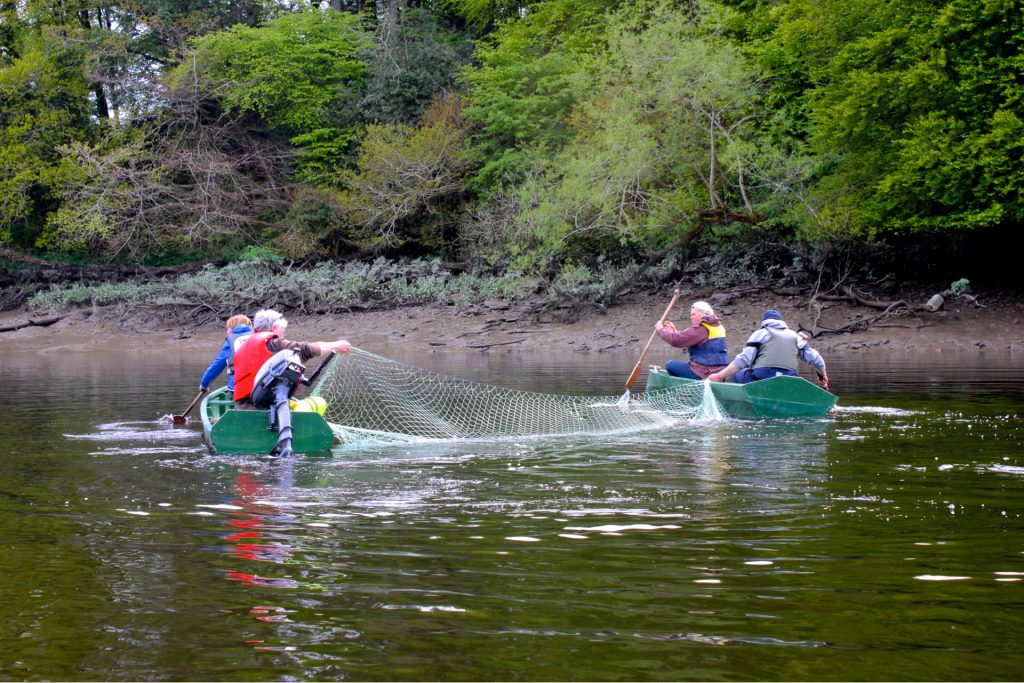
Drift net fishing of wild salmon was banned in Irish waters in 2006. It still is banned as far as drift net fishing is concerned where long nets are towed by trawlers out in the sea. The reason for it is that the number of wild salmon went down dramatically in Ireland and other countries.
In spring 2011, the total ban on wild salmon fishing was partially lifted. It has since then been possible to fish wild salmon subject to strict observation of a long list of rules.
Wild Salmon fishing is only allowed for small traditional outfits, and only in the rivers – not out in the Atlantic. The fishing period is limited to the months of May to August. All wild salmon caught have to be tagged and registered, and the number of salmon an outfit can fish is strictly limited.
The fishing takes place more than 5 kilometres upriver. This is important because the wild salmon, on return to and in search of the river where they came from, swim into the river for a certain distance and taste the water. If it is not the river of their origin, they turn back to look for the right one.

The fishermen catch the salmon with a lot of skill and with very traditional methods.
Birgitta went to the river Nore in Co. Kilkenny once to witness for herself how the wild salmon fishing in flat-bottomed wooden boats called Nore cots was done. There she was able to partake in the snapnet fishing which is an age-old technique still in use today.
Snapnet-fishing is a time-consuming technique where the net is drawn between two cots. When movement in the net indicates that there are fish trapped in it, the fishermen haul up the lower end of the net in one swift movement – sustainable fishing at its best.
Since the introduction of the commercial drift net fishing ban in Irish waters in 2006, the salmon stocks have reached a healthy level again.
Here you will find more information on the life cycle of Wild Salmon.